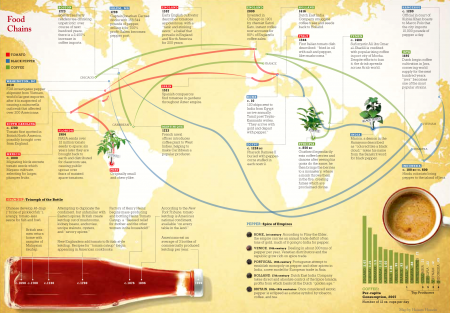- Planting roadsides with natives, including crop wild relatives. And here comes the database.
- Orange Maize: The Movies.
- VirtualKenya really here. Mother-in-law beside herself.
- Plant Cuttings is out. And all of a sudden I’m in a much better place.
- Small is beautiful, farm edition. And as chance would have it, coffee farm edition. And urban edition.
- Dispute at iconic coconut plantation resolved. Apparently there are some really unique varieties there.
- I say boniato. For the first and last time.
- Acacia on the brink. Easy, tiger. The name, not the genus.
- We’re going to need a better model.
- Pulque comes back. Never knew it had gone away.
- Domesticating fruit trees in Kenya. Something for VirtualKenya?
Nibbles: Cryo, Tree diversity, Agroforestry, Seed industry, Trigonella, Ancient MesoAmerica, Niche models
- CIP’s high-tech genebank.
- “The project’s eventual aim is to plant several thousand trees at sites across Perthshire to act as a ‘living gene bank.'” What, because normally genebanks are dead?
- Millennium Seed Bank joins ICRAF’s BusyTrees thing. Which you can follow in about a million different social networking ways.
- Conservation Magazine does a number on crop improvement. Wait, what? Conservation Magazine? Yep, and with teaching resources.
- Fenugreek, barkeep, and make it a double.
- Ancient chocolate and corn routes.
- What species distribution models do you like?
Tomato, black pepper and coffee
No, those aren’t the ingredients for some kind of wacky new dish. But they do offer some insights into the global realpolitik and social status of the food bizniss, past and present.
Thanks to Rachel Laudan for pointing to Lapham’s Quarterly, source of that infographic — you’ll want to click on it to see it bigger and better — and much else besides.
Nibbles: SusAg WWF-style, Obesity, Innovation, African farmers, Cyanobacteria, Climate change experiment
- See what WWF thinks will make agriculture sustainable.
- Americans are dying younger. Obesity partly to blame.
- Study shows how scientists can get farmers to innovate. And vice versa?
- Iron-age beer in France. “Beer … might have resembled modern home brews.” Which might have created a nation of wine-drinkers.
- Voice of America ♥ Nourishing the Planet. (African farmers also important.)
- Bacteria in mosses on tree branches fertilize forest soils. How long before the whole thing is available in a packet?
- Bioengineering the prairie. Together with, presumably, its crop wild relatives.
Nibbles: Bramleys, FAO vs Big AG, Biofuels, Honduras, Indigenous food
- Awesome apple tree awes impressionable TV reporter shock.
- Food fight!
- Food fight referee?
- Recent developments in the world of biofuels; CABI sorts the good, the bad and the indifferent.
- A blogger asks: “What is the appropriate mix of policies regarding agriculture in Honduras?“
- Watch a video on an indigenous food festival in Thailand by following instructions here. Note to film-makers: there are simpler ways to share a video.
